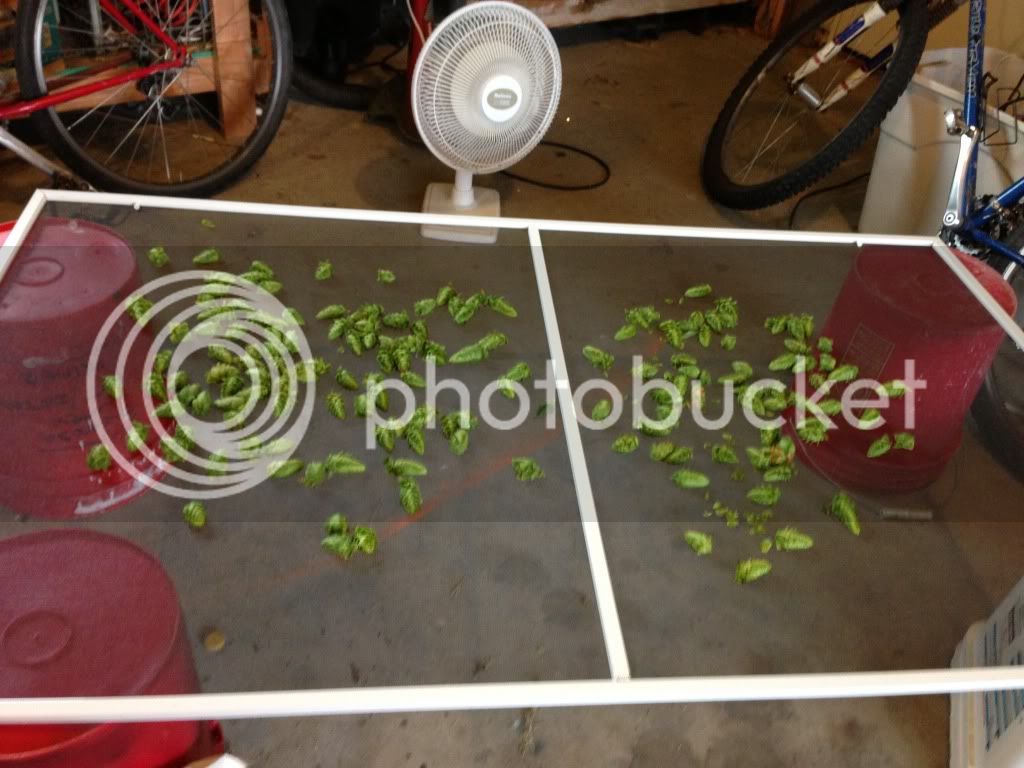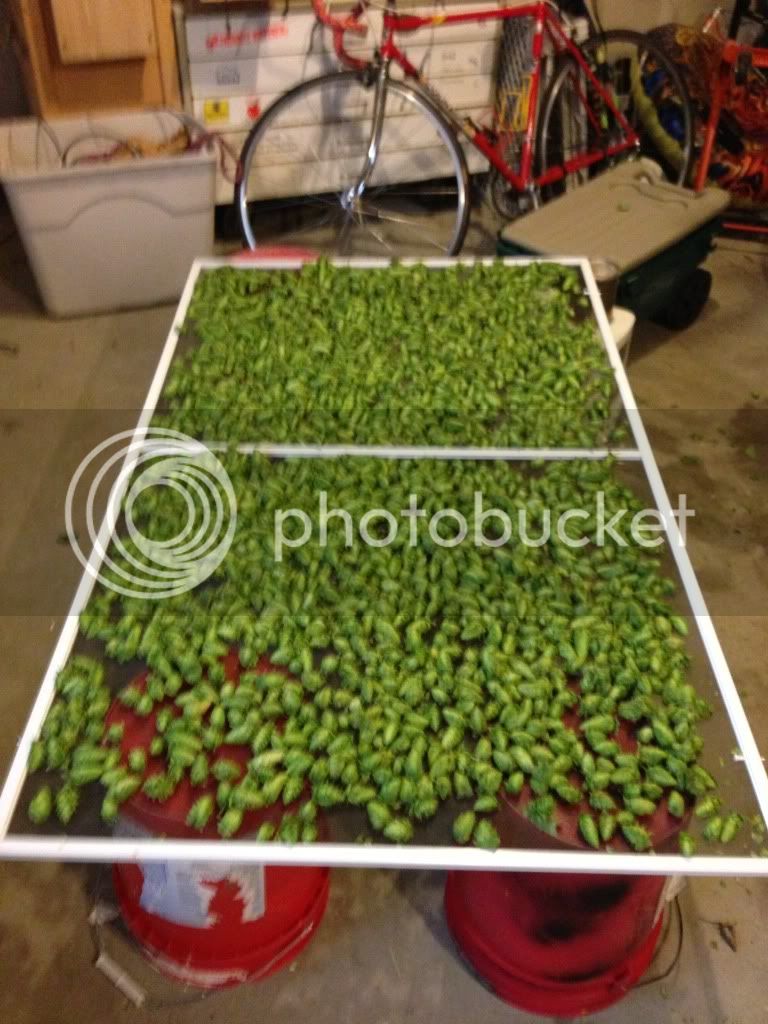You ever get any fiberglass fragments from those filters?
I was wondering the same thing in using the fiberglass house filter?

You ever get any fiberglass fragments from those filters?




I recently dried my hops which started off at 13# and ended up just shy of 5# (roughly 38% weight retention). I'm not sure if they could be any dryer! Remember that information found on these pages are only guidelines.
To the other poster, my basement is finished although like every other basement I'm sure it's a little more humid down there. I don't have a meter so I don't know for sure where its at though.

Thank you TrojanMan. That was the perfect answer I was looking for. I have a friend that gave me about a half gallon of Hallertau and all I did was vacuum seal them and threw it in the freezer. I was wondering if I had to dry them out before use, it sounds like I'll have to. Planted a hallertau plant just the other day and it will be interesting next year if it comes through the winter alright
If I were to dry hops in the basement with a fan, will it make my basement smell like hops? I don't mind the odor but others in my home are overly sensitive.
Sent from my iPad using Home Brew
They like the final product but nothing to do with making it!
Sent from my iPhone using Home Brew
So what happens if you wind up too wet? This is my second harvest and I picked my Centennials last week. I got 13 oz wet and they've been on a window screen over a box fan in the basement for the last week. I wound up with a little under 4 oz dry and that's around 30% of the original mass. I thought that was within reason and have already vac-packed and tossed in the freezer then of course started to research what they should have been.
I guess I'm a little surprised they only got down to 30% with a week over the air. I had them single layer and enough air movement to jostle them around with them blowing everywhere.
Am I screwed? I'm planning to pick my Cascades this weekend.

2 days to dry hops with a fan on high? That seems really inefficient to me as I simply left mine on a screen for 3 days in August and they dried out fine.
You CAN dry them in the sun, but it is certainly not the best. I know, people have said that they hang out in the sun for over a month before you pick them, so what is a few days more? But living plant tissues make things to stay healthy and green and the cells repair solar/environmental damage; this capability is lost when they are picked. Everything will bleach out in the sun and more time is more damage; about 1000W per square meter in full sun is intense, and it will cause changes. Even in strong sunlight it will take time to fully and evenly dry all the way into the strig; otherwise you dry the bracts but the inside - glands and strig - remain more moist. The cones may seem dry but when stored in a closed container that wetter inside part will equilibrate and could leave the hops too wet in storage and they will degrade from that.
Most solar dryers for vegetables use a panel for heating the air and keep the vegetable matter in a protected (light and insects) enclosure. Sunlight damages.
But if you have hops and time to compare, dry some in the sun and some in a warm/hot shaded place and compare drying time and degradation (bleaching, aroma). The difference may not bother you. Again, even if sun drying (and now days are shorter...), it may take several days to dry fully to the strig, so judge carefully; you will want to bring them inside at night if not fully dry - esp in Atlanta in late summer, with the generally high RH of the southland.
good luck! Cheers!

Enter your email address to join: